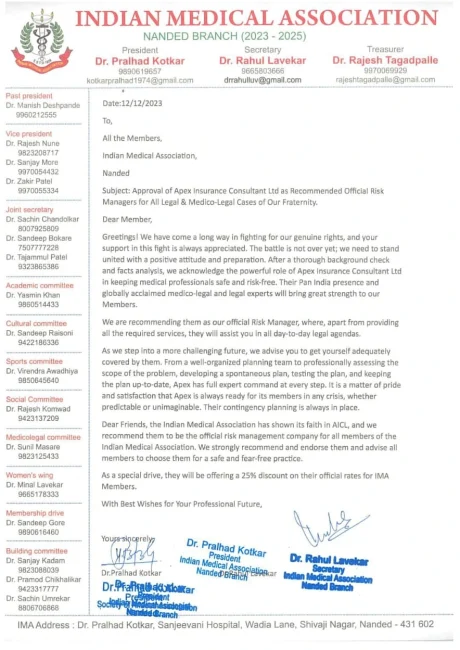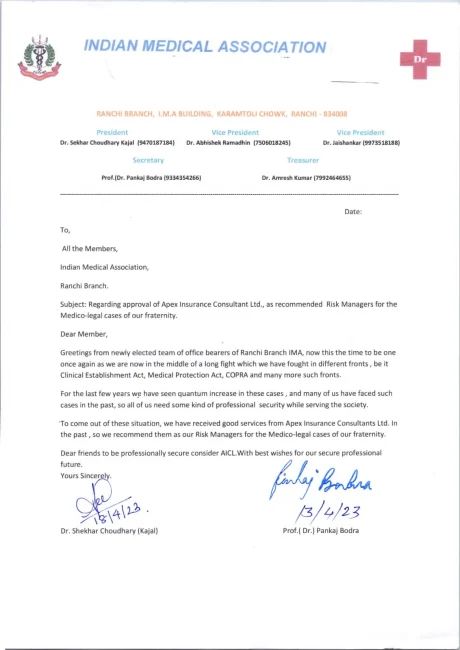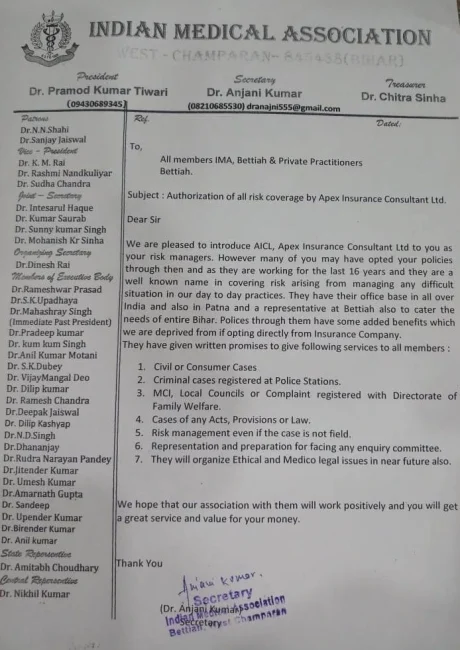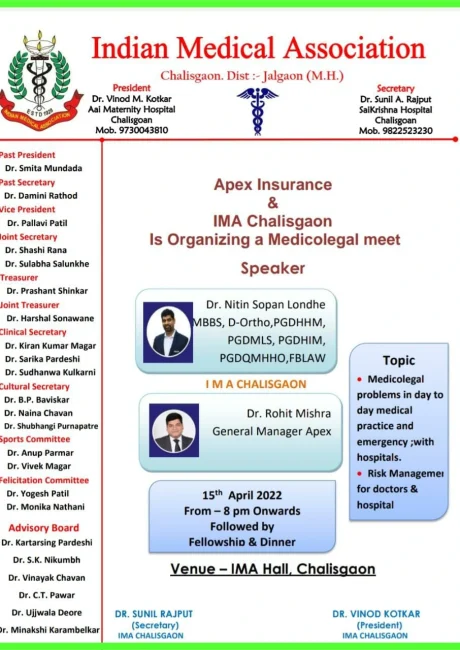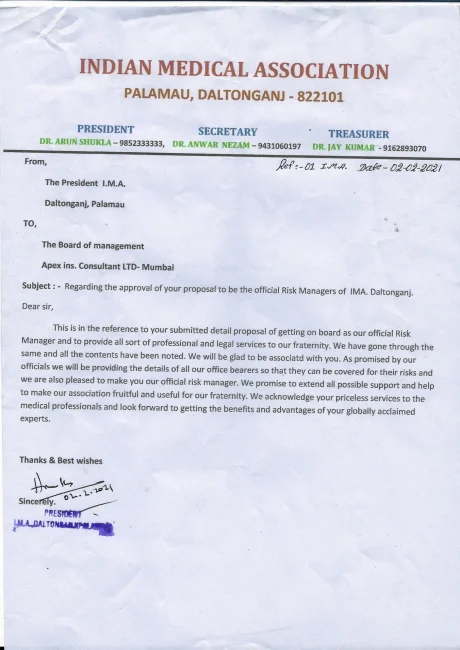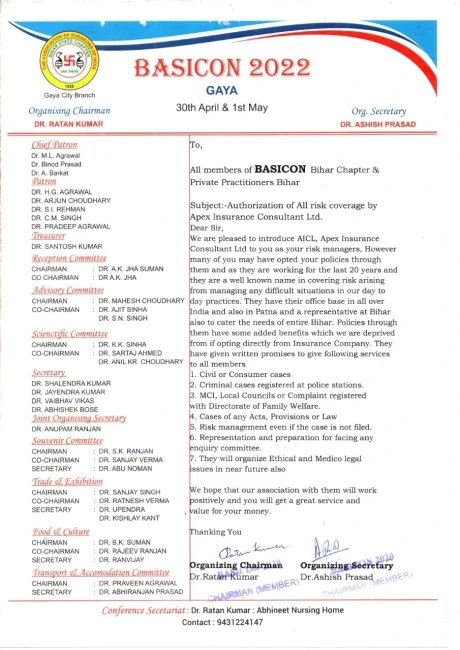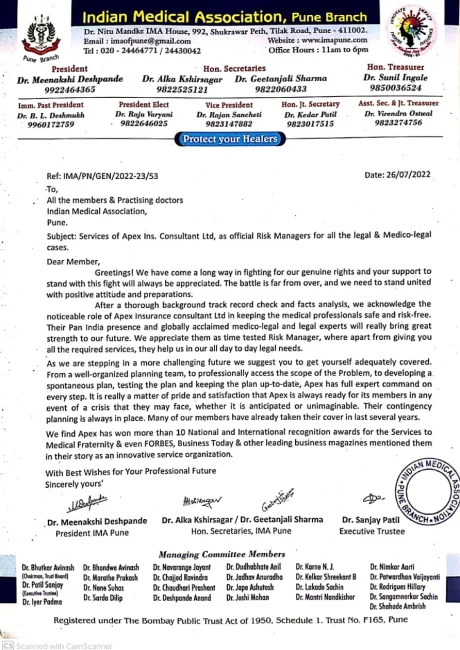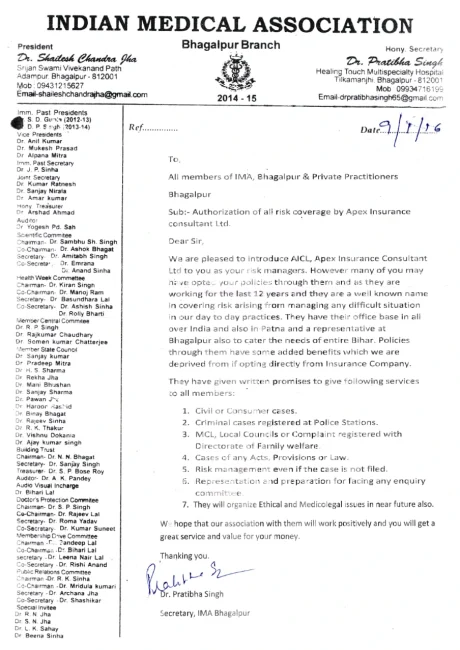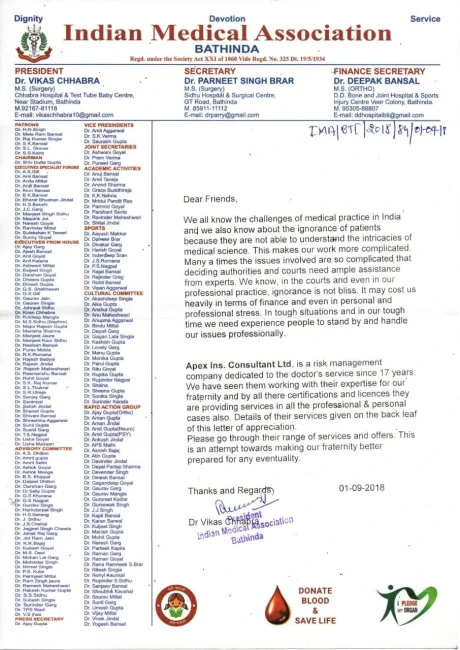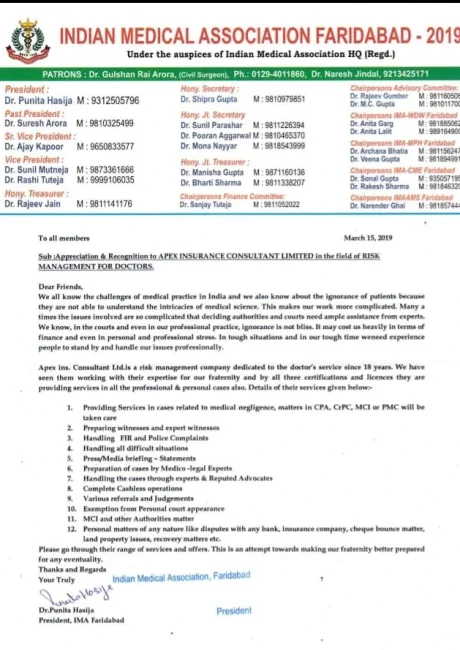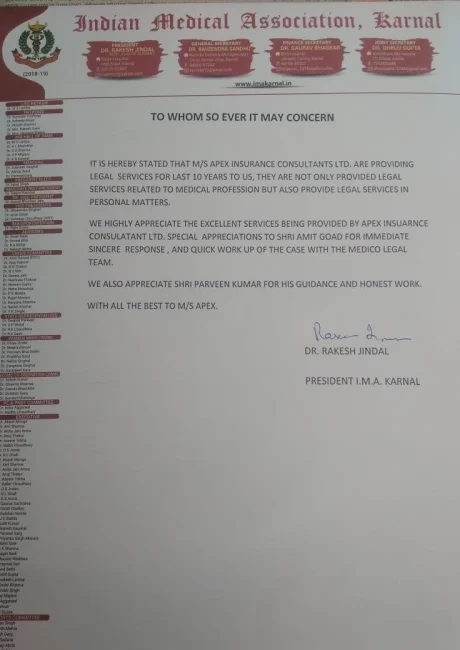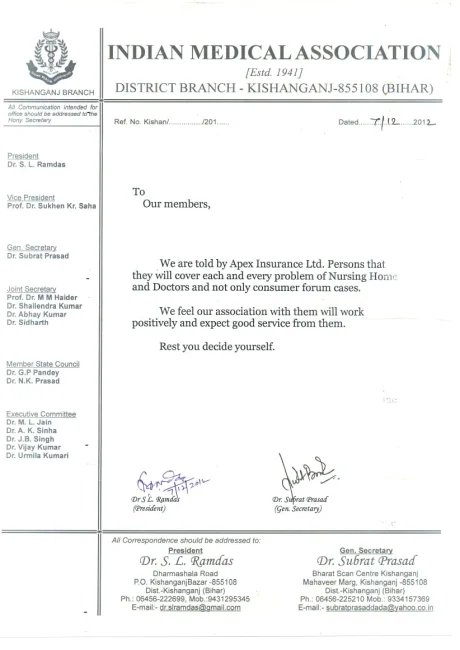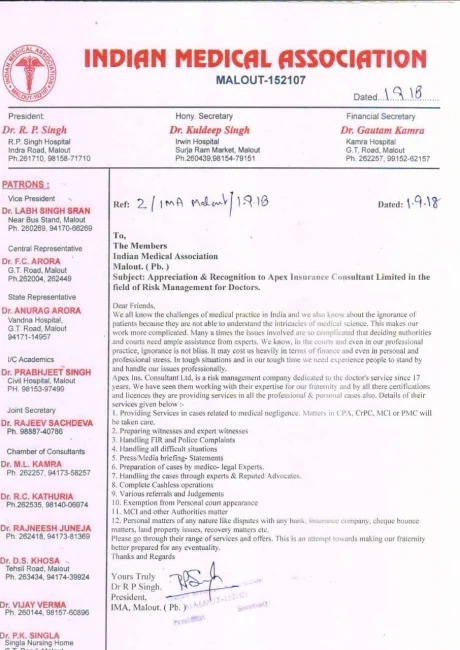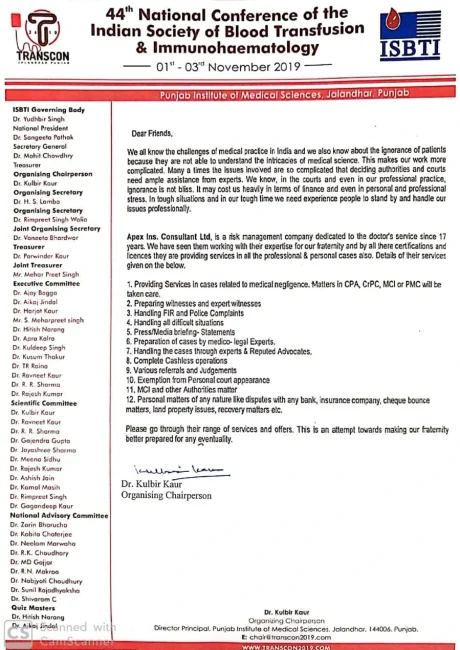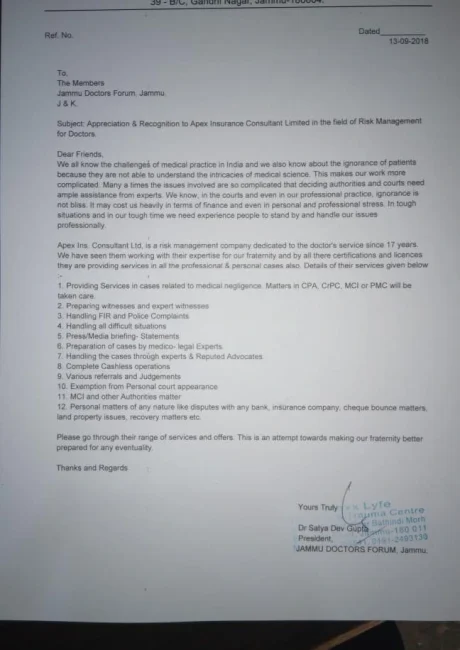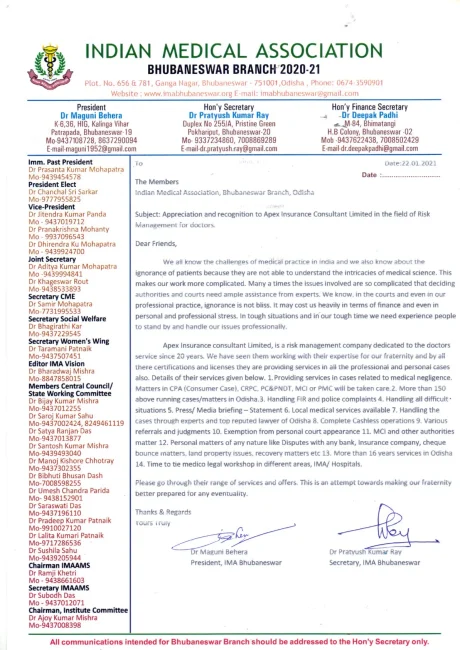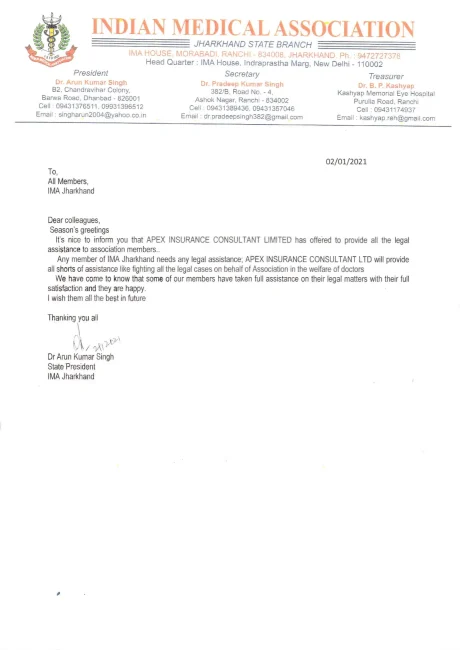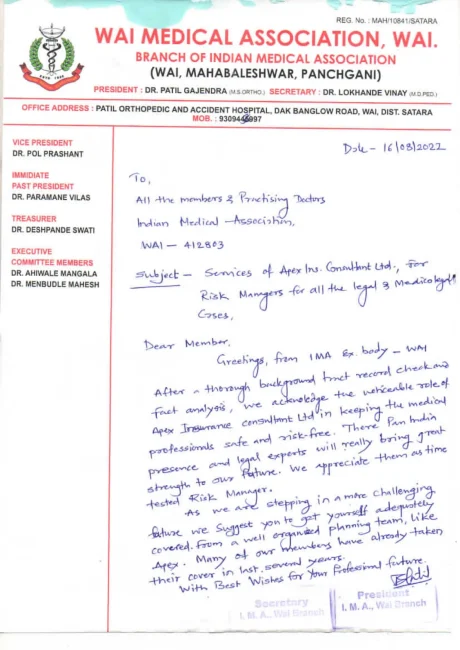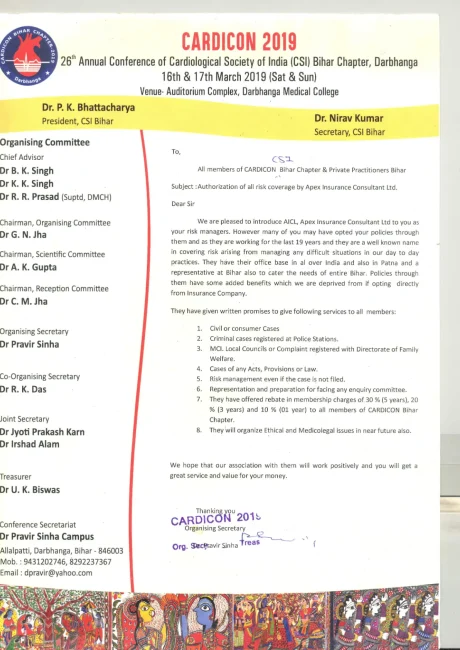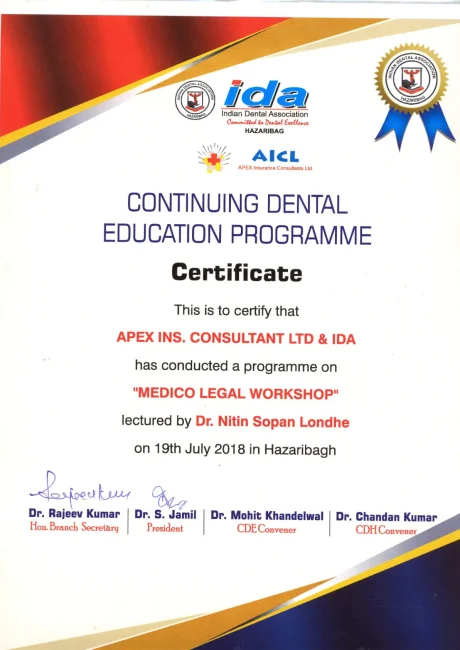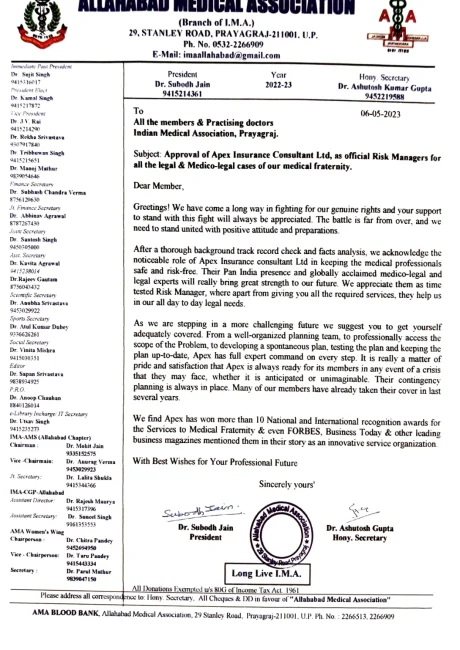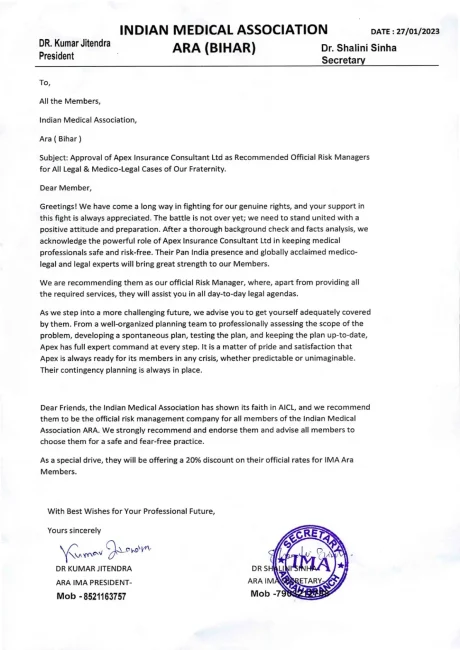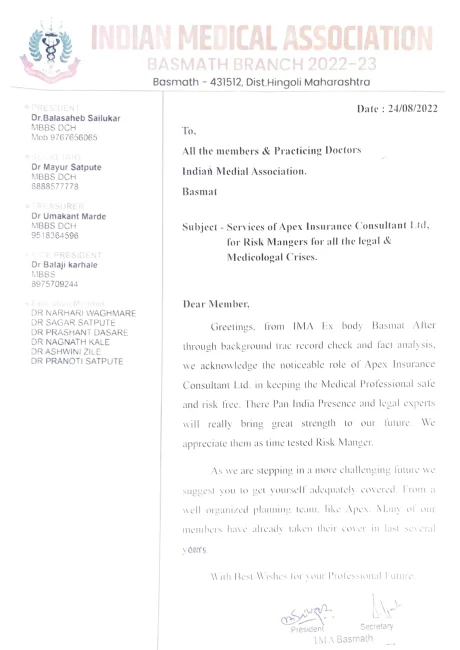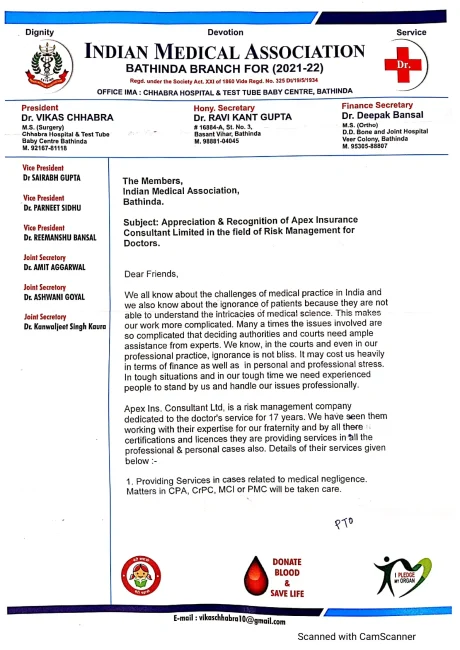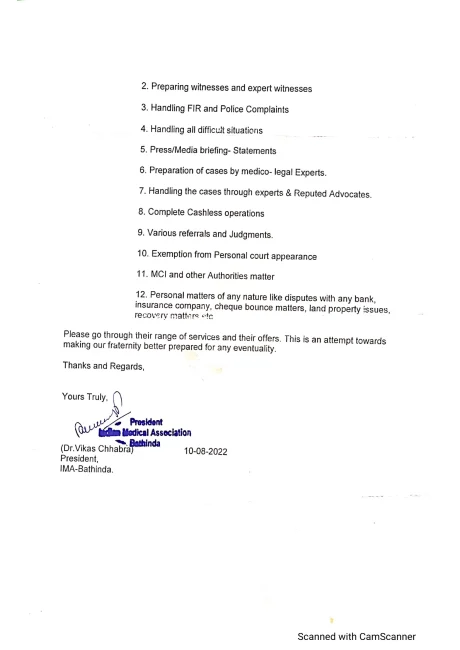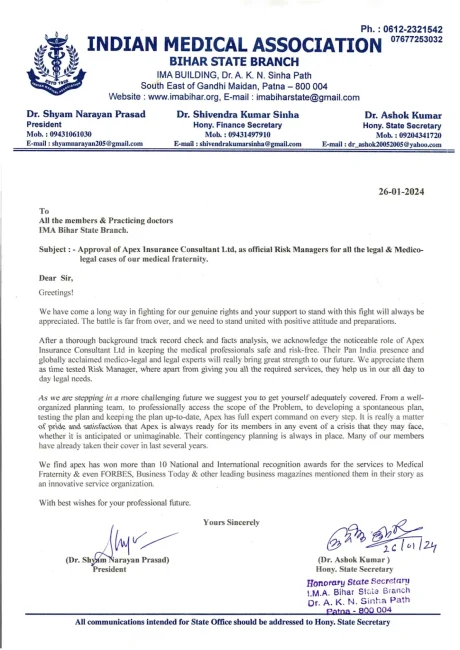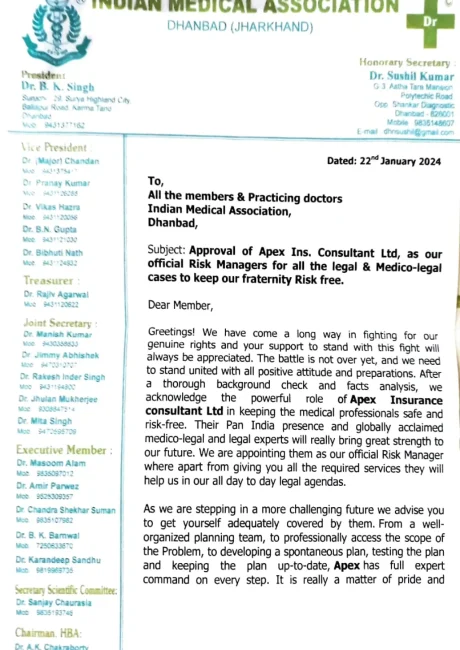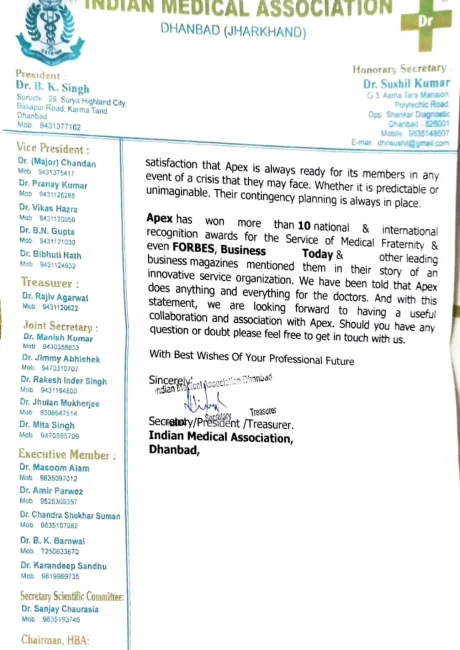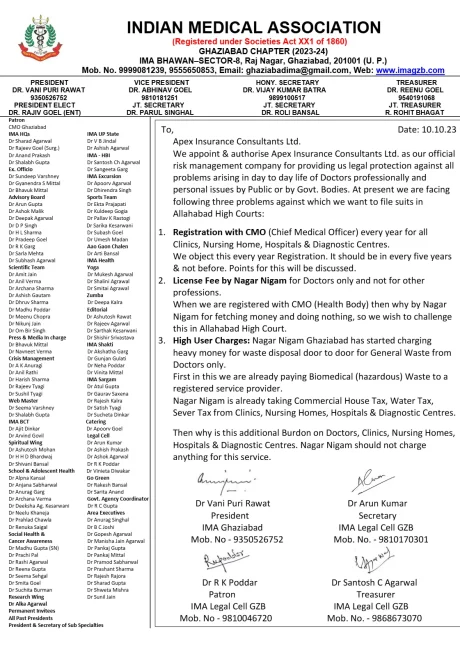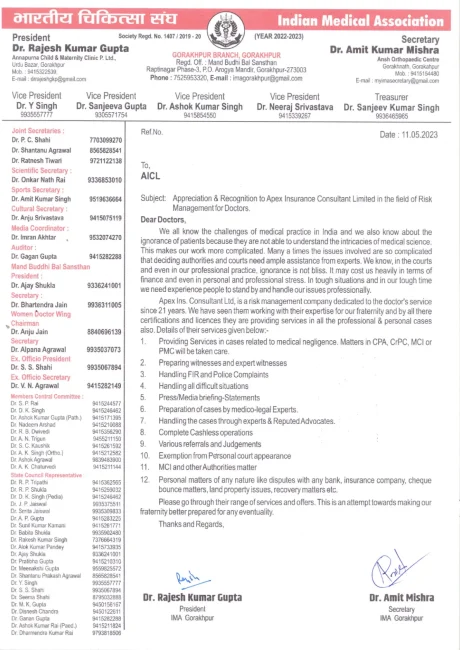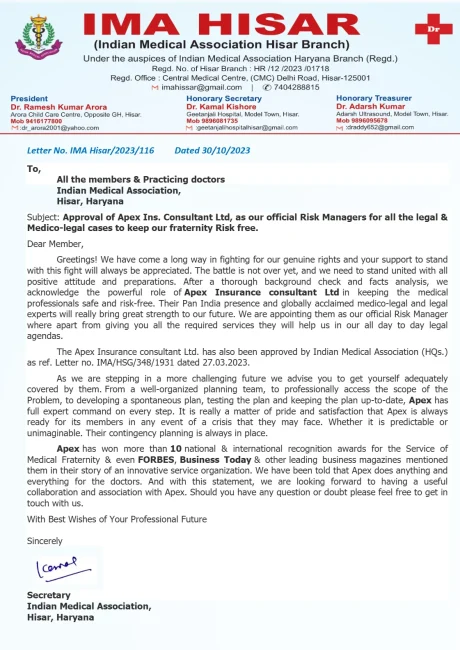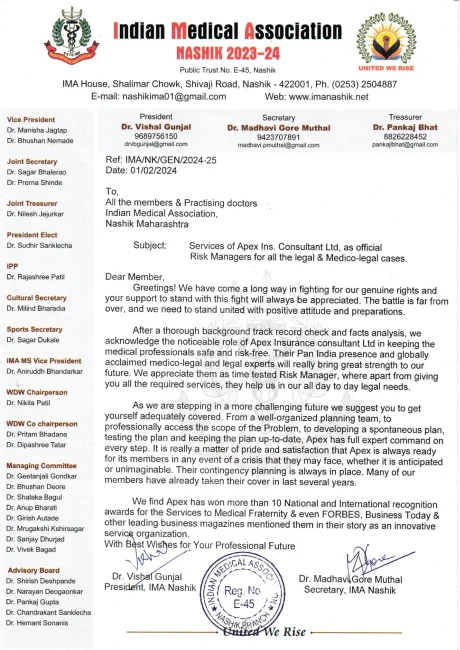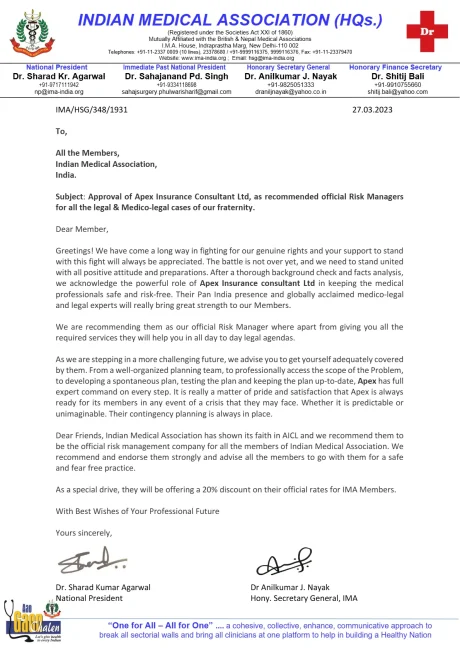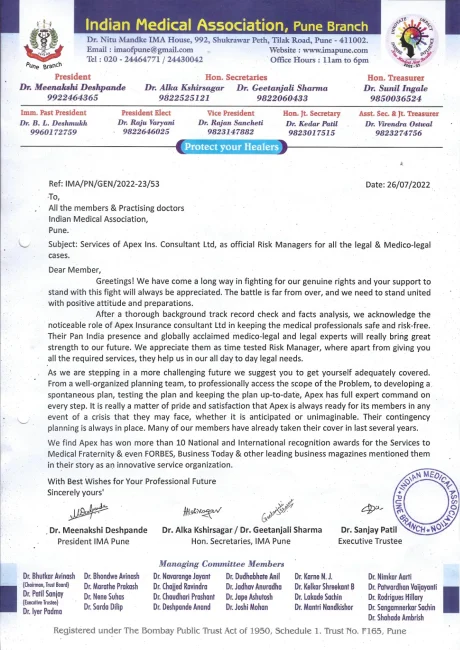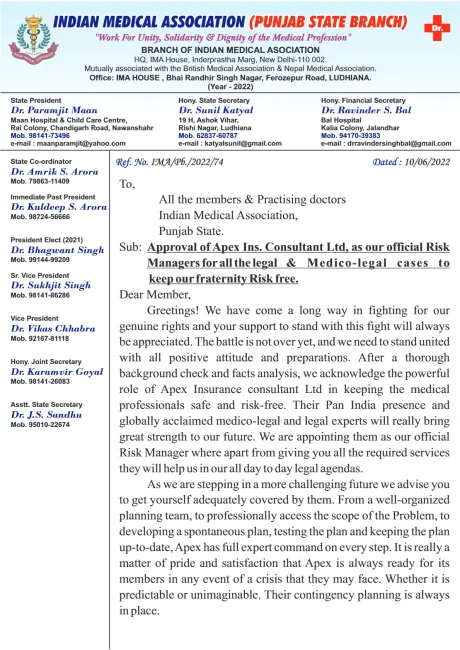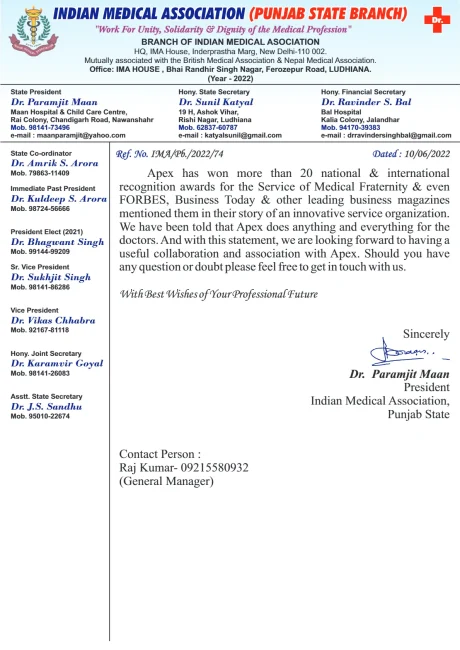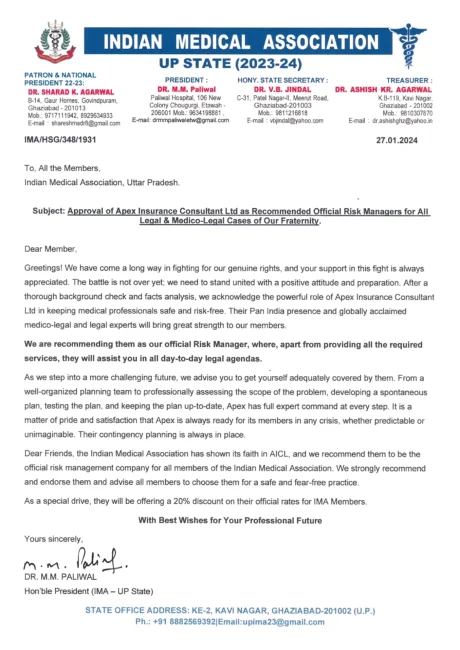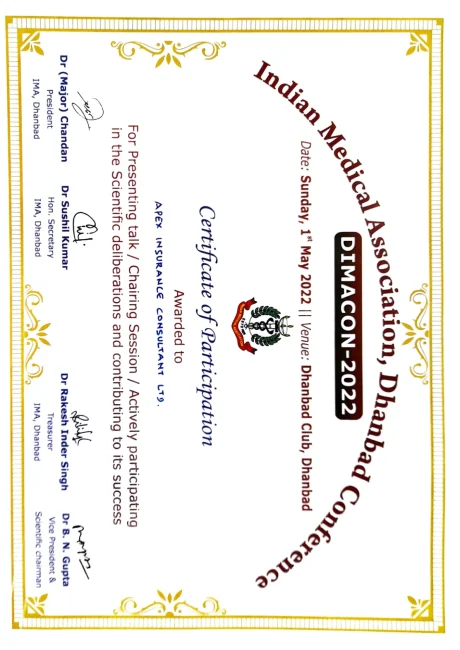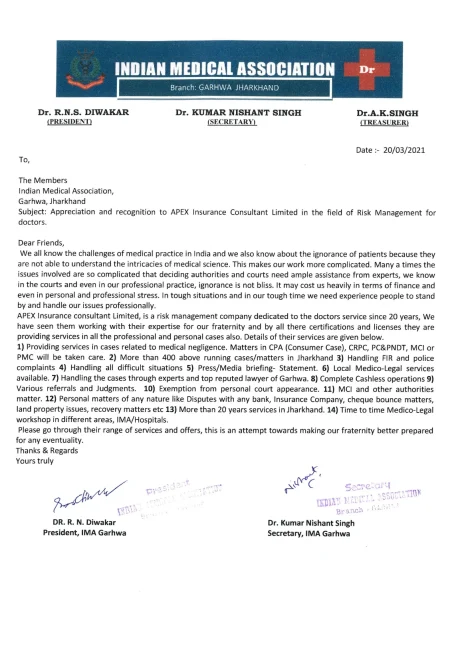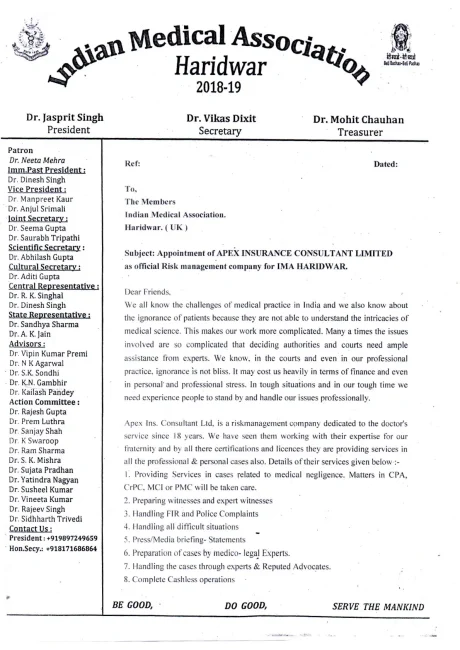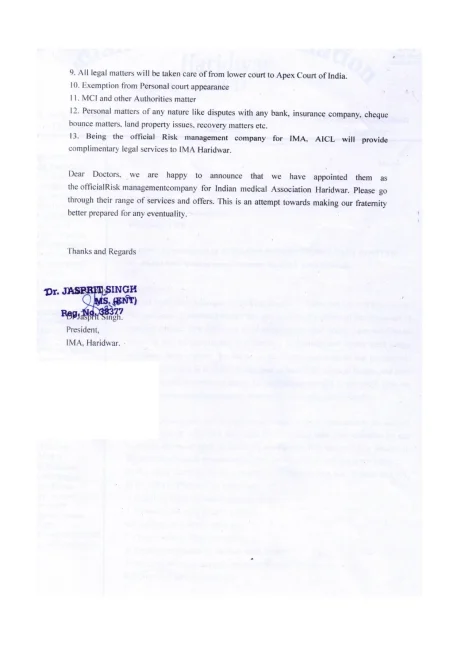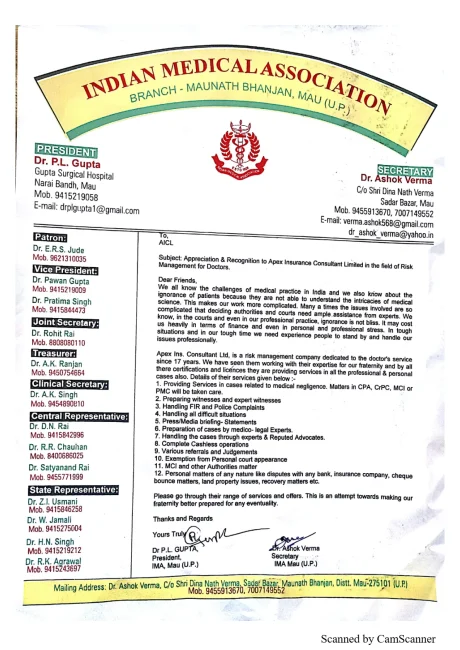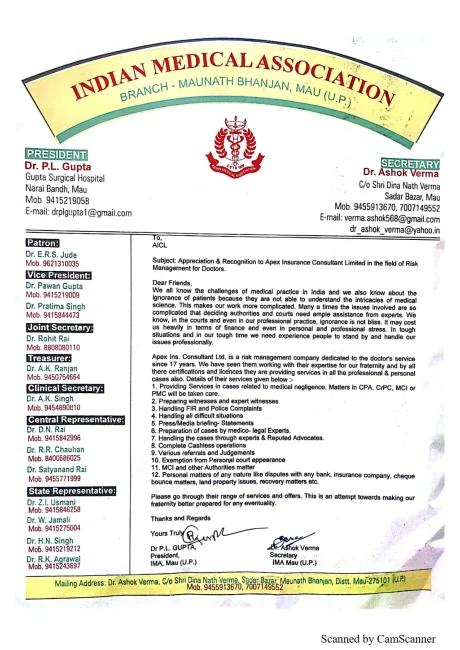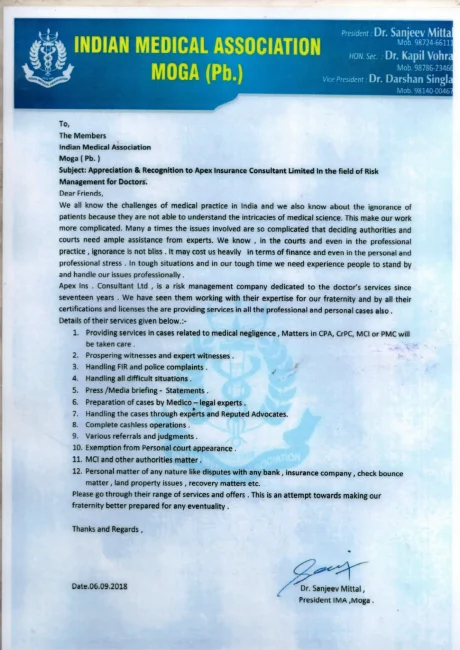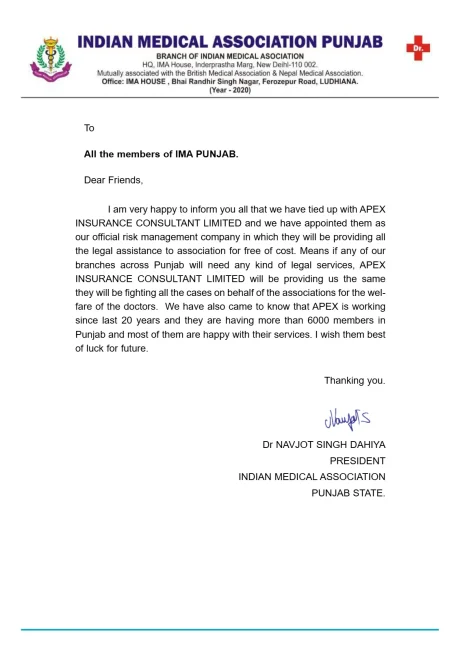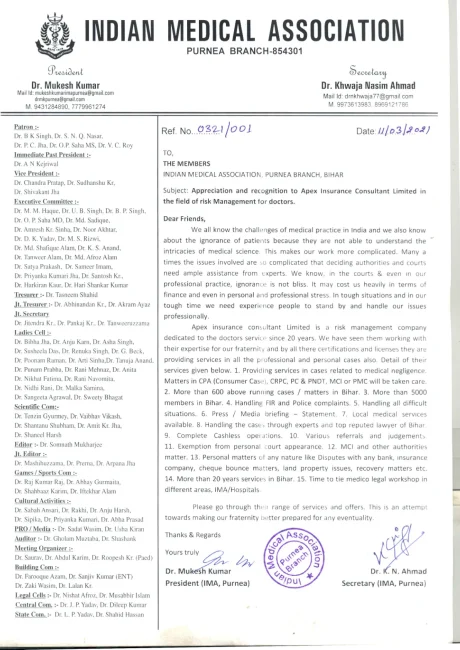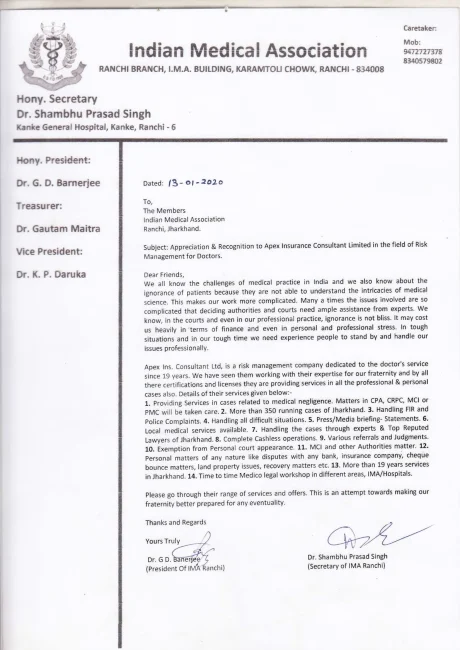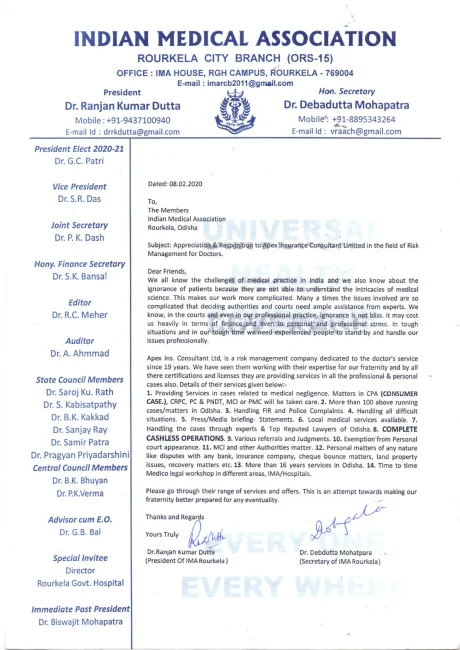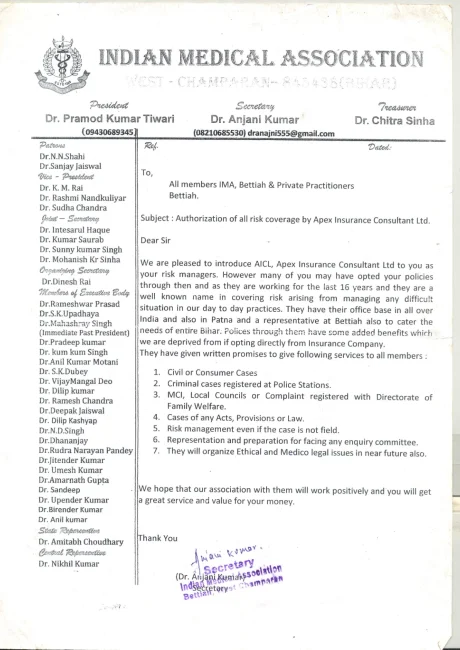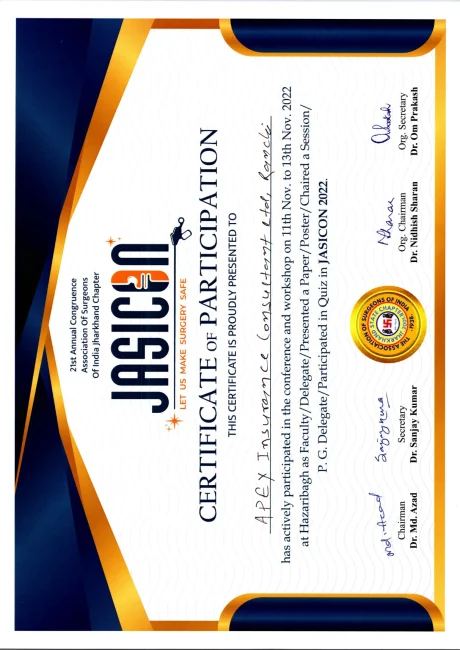By,
1. Dr. (Prof.) Mahesh Baldwa,
M.D, D.C.H, FIAP, MBA, LL.B, LL.M, PhD (law)
Senior Pediatrician & Medicolegal Advisor
Formerly Assistant Professor of Pediatrics at T.N. Medical College and Nair Hospital, Mumbai-8
Ex. Asst. Professor JJ Hosp, Grant Medical College
Ex. Professor, paper setter & examiner of law to postgraduate students of University Department of Law, University of Mumbai
Baldwa Om Hospital, Sumer Nagar, S.V. Road, Borivali (West) Mumbai 400 092
2. Dr. Sushila Baldwa, MBBS, MD Consultant, Baldwa Om Hospital, Borivali West, Mumbai
3. Dr Namita Padvi, MBBS, MD, DNB, PGDML, Emirates Hospital Dubai
4. Dr Varsha Baldwa, MBBS, MD, PGDML, Government Medical College, Kota, Rajasthan
Incidence
The incidence of LAMA or DAMA is 1 in 100 discharges from hospitals where patient party leaves against medical advice (LAMA or DAMA). Discharge against medical advice may expose patients to an increased risk of adverse medical outcomes including morbidity and mortality. Children as minors in health decision making may be more vulnerable. Professional liability is a concern for physicians caring for such patients. The phenomenon of LAMA is worldwide and is not limited to the developing world. LAMA is a universal problem, plaguing both rural and urban hospitals.
Concerns
Patients who leave against medical advice (LAMA) are both a concern and a challenge for individuals in the health care field. Skillful communication, flexible routines, policies and procedures, negotiable management options, good clinical care and thorough documentation constitute the cornerstones of dealing with this problem. The need for a clearly documented system or guidelines for assessing and managing such patients is important from medico-legal point of view.
Definition of DAMA
DAMA/LAMA has been defined in the broadest terms as any patient who insists upon leaving against the expressed advice of the treating team. Escape (absence without leave, absconding, or elopement), whereby the patient leaves the hospital without notification.
What are the consequences of LAMA?
Ending a hospitalization prematurely can have implications for evaluation and resource utilization system. Leaving against medical advice is likely to result in greater subsequent utilization, including more return visits, and perhaps greater costs for the subsequent care of an initially inadequately treated condition. If hospital care is incomplete, the patient may continue to be ill and require readmission. For conditions such as inadequately treated meningitis, endocarditis, diabetic ketoacidosis, or even pneumonia, inadequate treatment can be devastating. Subsequent care may be more difficult and more costly. Overall costs of caring for an individual patient over time may be higher for patients who leave the hospital prematurely. Therefore, preventing discharge against medical advice is likely to benefit both patients and health care systems. A discharge form similar to the informed consent document (though much simpler) where the patient’s understanding of the disease condition, the possible consequences of premature discharge and their reasons for DAMA would be highlighted. This form should also be translated into the patient’s own language for better comprehension.
Does Identifying a Discharge as “Against Medical Advice” Confer medico-legal Protection?
Usually one would expect increased risk of adverse legal consequences and subsequent litigation in LAMA cases. Does the term “against medical advice” confer any legal protection? In our view “against medical advice” was entirely not legally protective, though partial protection exists as per facts and circumstance of individual cases.
Legally what does DAMA and LAMA means
Here exists implied contract between doctor / hospital and moment they are admitted voluntarily in hospital. Hence discharge against medical advice is merely a withdrawal of the original implied consent of admission to hospital and further advice and treatment. If the physician has advised the patient to remain in the hospital. Patient party having rejected that advice, must be prepared for all subsequent adverse consequences. In fact one should take a signed waiver for not to hold hospital responsible for anything adverse happening even though connected to the treatment happening in hospital, if patient wants DAMA or LAMA discharge. Although decisions of lower courts is not binding for another, cases from lower courts are often cited in an advisory way.
What are the medico-legal implications of LAMA?
The medico-legal implications of LAMA need to be given serious consideration as the caregiver might not be protected from medical negligence charges. There is little evidence that LAMA provides any medical negligence protection. Many hospitals have a release form for patients to read and sign prior to leaving hospital against medical advice, relieving the hospital and medical staff of any responsibility related to the patient’s decision or its consequences. Hospital authorities should recognize that forms signed by a patient who is leaving against medical advice designed to protect the hospital in the event of an untoward consequence might have no legal protective value. The danger in such forms is that a physician may be tempted to rely on them instead of good clinical judgment and adherence to the recommended guidelines. The legal standard for protection from lawsuits continues to be good clinical practice with thorough documentation. Use of discharge against medical advice is not a safe road to legal immunity.
Nature of DAMA patient party
The review of literature identifies the characteristics of patients discharging themselves against medical advice. They are generally younger, male, who got admitted as emergency admissions and after slight or complete recovery in hospital in short time feel need for DAMA. Some patients may develop more severe symptoms during hospital stay losing confidence and asking for DAMA. In one more study they have identified a higher rate of discharge against medical advice in the elderly since patient party considered non-productive to spend on elderly people. Another study suggested that there may be collusion between the patient and the medical staff with the agreement that this is an appropriate method of discharge, especially in noncritical cases where patient party does not wish to pay part or full bill raised by hospital.
Legal peril
Patients discharged against medical advice in critical condition might therefore be expected to have more adverse consequences (exacerbation of illness and even death). Even in the absence of negligence, adverse medical consequences may trigger medical negligence suits. The likelihood of legal action is increased by intense emotion towards worsening condition of patient.
Ethical issues
The conflict between the principles of autonomy and beneficence, as well as issues relating to the physician’s autonomy eternally shall continue to remain in forefront in DAMA cases. But the conflict between the professional values (beneficence) of the physician and the autonomy (self-determination) of the patients is the most prominent ethical dilemma in DAMA.
The Hippocratic Oath and the Declaration of Geneva recognize the importance of beneficence, i.e. doing good to patients or at least not leaving them worse off than before their contact with the physician. This principle is one of the most important factors driving the physician-patient relationship, and anything that disrupts it may jeopardize a favourable outcome for the patient.
The principle of the patient’s autonomy is based on the right of each individual to make informed decisions about personal issues. In healthcare, autonomy is the basis for informed consent, a concept which has been accepted worldwide as a sine qua non for clinical practice and research. Currently, there is a shift from the previously accepted paternalistic way of relating with patients towards a shared decision making or even wholly patient-centred model. This shift is more obvious in the developed countries, and could be attributed to factors including the human rights movement, the imposition of control by governments and medico-legal issues, among others.
The main ethical conflict that arises when a patient decides to leave the hospital against the consent of the managing physician is between these two principles of autonomy and beneficence. The question is, which of them takes precedence? The deciding factors for DAMA are cost implications for the healthcare system, patient party’s decision making capacity to take shift patient for better treatment in case of increasing complications due to ensuing or evolving or effacing complications of disease.
Largely In disease conditions that are not terminal or those with fair prognosis, the weight of the decision making still rests with patients party.
It is the right of the patient to choose when, how and where to be treated and they should not be denied this privilege. In deciding to leave the hospital against medical advice signifies a withdrawal of the initial consent given by the patient party. If the patient seeks re-admission, it should be seen as a renewal of that consent.
Forced DAMA
Discharging DAMA and thus refusing patient to remain admitted could be seen as unfair, unethical or even wicked in developing countries when patient party’s pockets run dry, illness becomes grave and unmanageable. The ploy of DAMA/LAMA is used for shifting or driving away patient in name of better management in higher centre.
Decided cases: India
Patient leaving Hospital against Medical Advice (LAMA). No negligence can be attributed to Doctors in TARLOK CHAND MATTU V/s. M/S. VASAL HOSPITAL & ANR. REVISION PETITION NO. 2369 OF 2016.
Decided on 31 Jan 2017
(Patient) Leaving Against Medical Advise, popularly also known as LAMA, is the scenario which might be seen in various hospitals routinely. This Judgment is a lesson for patients and for Doctors as well, as it yet again emphasises the importance of proper treatment and maintaining the record.
Allegations of the Complainant in short:
- The Patient in this case i.e. the wife of the complainant, was admitted in the Hospital and was shifted to ICU. Certain tests worth Rs.1900/- were conducted, but reports were not shown to the Complainant nor the ailment details were shared with him. The complainant, who is a handicapped, had to run from pillar to post for seeking medical assistance.
- The Complainant and the Patient were pushed out from the Hospital in a very inhuman manner. The Ambulance was also arranged by the Complaint at his expense and not by the Hospital and on way the Patient passed away.
- Hence the Complaint was filed for Rs. 10,50,000/-
Patient leaving Hospital against Medical Advice (LAMA). No negligence can be attributed to Doctors
Defense of Hospital:
1. The patient with symptoms of fever, nausea, body ache, vomiting and weakness was admitted in ER and was attended by the emergency doctors and was treated properly.
2. After certain tests, it was diagnosed that the Patient had Leucopenia (Low White Cells), Thrombocytopenia (Low Platelets Count), High SGOT, SGPT (Liver Enzymes) and viral fever with hepatitis.
3. Due to then existing epidemic of dengue fever in the city, a provisional diagnosis of dengue fever was made.
4. However after few hours, the patient’s condition started worsening, may be due to Dengue Shock Syndrome (DSS). The patient’s attendants were also informed about her condition and the treatment given. In this course, the patient left against the Medical Advice.
However, both the lower forums on evidence, dismissed the Complaint and hence the Revision was filed in national Commission.
Patient leaving Hospital against Medical Advice (LAMA). No negligence can be attributed to Doctors
Held:
The National Commission after perusing the evidence on record and after hearing of the parties on merits and relying upon landmark judgments of Hon. Supreme Court, dismissed the Revision and observed as :
1. The Complainant failed to establish as to exactly what the Doctor ought to have done. There was no iota of evidence to buttresses the allegation that the patient was not given proper treatment.
2. All the necessary treatment to prevent the Dengue Shock Syndrome (DSS), which is a common complication of such viral fever, was given.
3. If the Patient had left against medical advice and there is no material on record to establish that the care, which ought to have been taken, has not been taken, no negligence can be attributed to Doctors.
The Doctors colleagues must have faced such situation at least once in their practice. As it is said “Nor record is no defense and poor record is poor defense”, this case exactly emphasises this aspect. If the patient is not satisfied with the treatment, he has every right to change the Doctor / Hospital and in such cases, proper documentation, consents are essential, that may in turn protect Doctors if the cases are filed.
Patient leaving Hospital against Medical Advice (LAMA). No negligence can be attributed to doctors.
The procedure to be followed for Unconscious patients / Patients on Ventilator requesting discharge or transfer against medical advice to other hospital is
It must be reiterated that a patient who is unconscious / on ventilator cannot be taken to home. He has to be taken ONLY to another hospital. (If a patient who is on ventilator is taken to home. it is effectively Homicide by omission. That is not permitted in Indian Law.
Unconscious patients shall be shifted ONLY to another hospital (say Hospital 2) from Hospital 1
They have to be shifted ONLY in an Ambulance with Life Support facilities and a trained EMT / Staff Nurse / Doctor
That they patient was alive at the time of shifting from Hospital 1 has to be recorded in writing (with their sign) by the EMT / Staff Nurse / Doctor in the Case Sheet of Hospital 1. This is mandatory. Consent Signature of the relatives alone is not enough.
If the EMS / Staff Nurse / Doctor who has received the patient from Hospital 1 does not belong to Hospital 2, he / she needs to document the fact that the patient was alive at the time of take over by Hospital 2. The documentation can be from EMT / Staff Nurse / Doctor of Hospital 2. (If the Hospital which is receiving the patient from Hospital 1 has send its EMT / Staff Nurse / Doctor for receiving the patient, then this step 4 is not needed)
Foreign cases: Contributory Negligence
- Weinstock v Ott, the estate of Norma Ott
In Weinstock v Ott, the estate of Norma Ott successfully sued for medical negligence claiming Dr Weinstock had breached a duty to refer Ms Ott for diagnostic consultation when he was unable to discover the cause of her disorder. Dr Weinstock had referred her to a hospital for tests, at which time the cause of her 4 years of abdominal problems was determined to be ischemic bowel disease. After 4 weeks of tests her condition deteriorated, and she discharged herself against medical advice to return to the care of Dr Weinstock before a definitive diagnosis had been made. Because of her husband’s dissatisfaction with her condition, she returned to the hospital, had further surgery in October, and died shortly thereafter. It was part of Dr Weinstock’s (the outpatient referring physician) defense that Ms Ott had contributed to her problems by discharging herself from the hospital against medical advice. However, she was found not to have been contributorily negligent. The general rule on a patient’s contributory negligence states that the patient must exercise that degree of care that an ordinary reasonable person, under the same disabilities and infirmities in like circumstances, would exercise.
Whether she acted unreasonably in discharging herself against medical advice was a question of fact for the jury. On appeal, the court held that since she had been ill for 4 years, had been in and out of hospitals, had a plethora of tests, and was frustrated from years of unsuccessful tests coupled with her extremely poor health, the jury found that Ms Ott did not act unreasonably when she discharged herself from the hospital. It might appear that competent patient not meeting criteria for involuntary hospitalization who has received all relevant information and then suffers an adverse event causally related to an “against medical advice” decision would have no claim against the physician or the medical authorities. But as noted in Weinstock v Ott, the physician has a duty of care which, in that case, included a duty to refer the patient for a diagnostic consultation. The patient’s decision to leave against medical advice may be regarded as reasonable in certain circumstances, and if so, this type of DAMA offers no protection.
- Suria v Shiffman :- Patient’s action of LAMA increased the extent of the injury
In Suria v Shiffman, the court held that the patient’s actions in leaving the hospital against medical advice did not afford a complete defense in a medical negligence case (brought in connection with the administration of silicone injections to a transsexual male), but would warrant a reduction in damages to the degree that the patient’s actions increased the extent of the injury.
In Suria v Shiffman, the issue of contributory negligence arose again. In that case, the patient was held responsible for a proportion of the damages suffered and, while the defendant was ruled against by the court, the liability for the full extent of the damages was reduced accordingly. This may be regarded as a partial protection, but courts and juries are reluctant to invoke this against a patient who is seen as the underdog. That was the situation in Hawkins v Brooklyn-Caledonian Hospital. The dissenting judge in that case bore no sympathy for Mr Hawkins, who was a drug addict and caused most of his own misfortune. However, the other 3 judges, who ruled for the plaintiff, were more sympathetic.
The psychiatric cases cited show that if the criteria for involuntary commitment are not met, “leaving against medical consent” appears to provide a comfortable degree of legal protection.
- Pollicina v Misericordia Hospital Medical Center and Hospital of the Albert Einstein College of Medicine :- Hospital discharging DAMA protected but not hospital receiving the patient
In Pollicina v Misericordia Hospital Medical Center and Hospital of the Albert Einstein College of Medicine, the patient discharged herself against medical advice from the Misericordia Hospital but was immediately admitted to Einstein Hospital. The patient died 1 week later of pulmonary thrombosis. In this medical negligence case, the trial court granted motions to dismiss the complaint against Misericordia on the basis that the actions of the hospital had not led directly to the damage to the patient. The protective factor was that following her discharge against medical advice, she was admitted to another hospital.
Pollicina v Misericordia Hospital Medical Center suggests that a patient’s duty is to seek alternative care when leaving against medical advice. When this duty is ignored, protection exists for the physician or hospital.
- Hawkins v Brooklyn-Caledonian Hospital:- DAMA- no protection to hospital
In Hawkins v Brooklyn-Caledonian Hospital, the patient brought an action against the hospital claiming that the failure of a physician to obtain assistance inserting a subclavian catheter and to properly insert the catheter, the tip of which broke off inside the patient’s body during the procedure, was a departure from good and accepted medical practice. The patient was warned that physical activity could cause the tip of the catheter to migrate, causing his death. He also suffered the painful effect of thrombophlebitis and its continued consequences, including the use of illicit drugs after a period of sobriety in an attempt to self-medicate. Mr Hawkins left the hospital against medical advice, missed 2 scheduled appointments, failed to take his medication, and was later readmitted with another bout of phlebitis. He was discharged 2 days later but failed to keep his next clinic appointment.
In this case, although some of the damages claimed were the result of the patient’s failure to comply with recommended medical treatment, the court of appeals ruled in a 3 to 1 decision that the trial court’s verdict against the hospital and damages should stand.
- Kelly v United States of America and John Doe :- Psychiatric case – stabbed officer after DAMA- hospital not liable
In Kelly v United States of America and John Doe, John Roe, and John Shoe,the decision of a Veterans Affairs Medical Center to release Arnold Shockley against medical advice was challenged. After Shockley was released, he stabbed Officer Kelly. The court held that there were no reasonable grounds for the treating psychiatrist to seek involuntary commitment of Shockley, and judgment was made in favor of the medical center.
- Solbrig v United States of America :- Suicidal tendencies- DAMA- not liable
In Solbrig v United States of America,the Solbrig family brought an action alleging that the veterans hospital in Milwaukee, Wisconsin, and 2 of its nonpsychiatric physicians should not have released Mr Solbrig because he was a clear suicidal risk. He died by suicide within hours of his discharge against medical advice. The court found that although Mr Solbrig had expressed suicidal tendencies in the past, he showed no signs of being a genuine suicidal risk on the morning of his discharge, and the physicians were not found negligent in their treatment of the patient.
- Dedely v Kings Highway Hospital Center :- The Use of a Waiver form- contrary to public policy and therefore worthless
A hospital may not, as a condition of allowing a patient to leave against medical advice, require the patient to sign a form releasing the hospital from liability for medical negligence claims by the patient. In Dedely v Kings Highway Hospital Center, a mother requesting the release of her infant son was required to sign a form by which she assumed “all risks, responsibilities and liabilities, whatsoever” and released “Kings Highway Hospital Center, Inc, its physicians, surgeons, authorities, and employees from all risks, claims, responsibilities whatsoever.” The court found this type of form to be contrary to public policy and therefore worthless. It also observed that “a hospital’s failure to release a patient unless it sought judicial relief, would undoubtedly subject the hospital to an actionable tort.”
- City of New York v Antoinette R, the New York City Health Commissioner Hospital :- Justified detention Orders by hospital
In the matter of City of New York v Antoinette R, the New York City Health Commissioner sought enforcement of an order requiring forceful detention in a hospital setting of a person with active infectious tuberculosis to allow for completion of the appropriate regimen of medical treatment. The Supreme Court of Queens County decided that evidence that the patient had discharged herself against medical advice on a number of occasions justified detention, despite evidence of her recent voluntary cooperation in adhering to the recommended medication regimen.
City of New York v Antoinette R illustrates, in a tuberculosis case analogous to the psychiatric cases, that a third party subsequently infected by a patient who should have been detained under a city order could have grounds for a successful suit against the physicians and medical authorities who failed to protect the community.
Three safeguards for hospitals for DAMA
All competent adults possess the autonomy to make this decision. Physicians and medical authorities have a responsibility to patient, before discharging against medical advice, that: (1) the patient’s withdrawal or refusal to treatment evidenced by DAMA is documented by refusal consent which is fully informed with respect to risks and alternatives; (2) the patient possesses the mental competency to make a reasoned decision on the basis of adequate information; and (3) the patient does not meet the state standard for involuntary psychiatric hospitalization. Discharging against medical advice without documentation that the physician conscientiously addressed these 3 issues will leave the physician and the hospital authorities legally unprotected in the event of an adverse consequence. Even if these 3 safeguards are in place then also “leaving against medical advice” is not necessarily legally protective.
How to minimize the risk of adverse outcomes of LAMA to patient?
This can be done by providing the patient with a written summary of his or her hospital stay to assist health care providers in the event the patient presents to a different hospital. The severity of the illness should be assessed as well as the severity of the risk if the patient is discharged. When a high degree of risk is involved, the physician should mention same in discharge card labeled DAMA/LAMA high risk. Before discharging a patient against medical advice, the physician should ensure that the patients withholding of consent for further hospitalization is informed with respect to risks, benefits, and alternatives.
Legal Protection to physician
Patients who leave hospitals against medical advice frustrate physician. To provide legal protection to physician if any could be done by clear LAM/DAMA documentation system and guidelines. There is no substitute for good clinical care and thorough documentation. Before discharging a patient “leaving against medical advice,” a physician should ensure that the patient is mentally competent, fully informed, and does not meet the criteria for voluntary admission to hospital.

